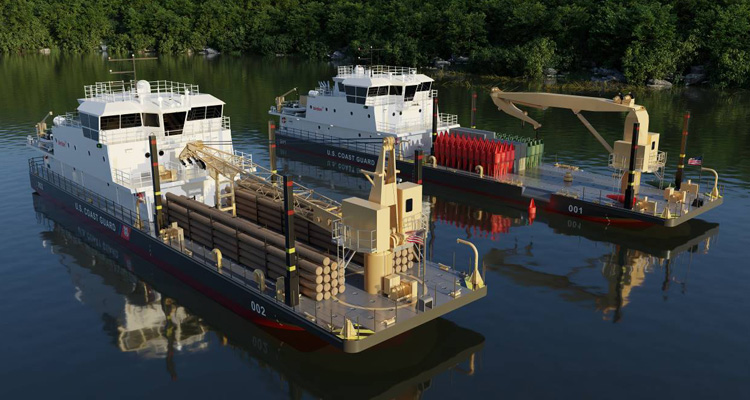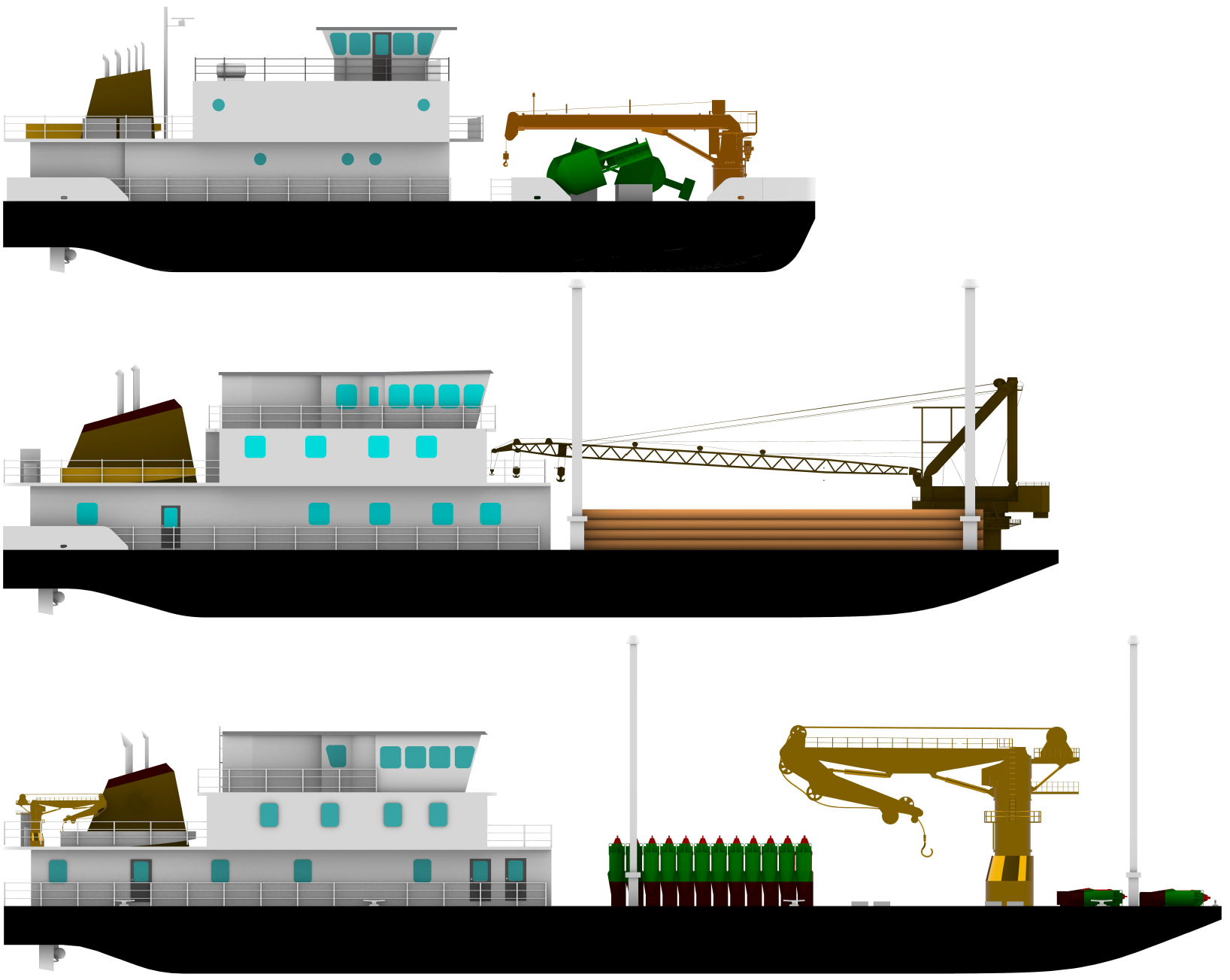Waterways Commerce Cutter

Notional vendor rendering of two Waterways Commerce Cutter variants: an Inland Construction Tender (left) and River Buoy Tender (right). The Inland Buoy Tender variant will be acquired separately. Image courtesy of Birdon America, Inc.
The Coast Guard’s current inland tender fleet consists of 35 tenders that support the Service’s aids to navigation (ATON) mission in federal inland waterways. These tenders play a vital role in directing the traffic of the Nation’s Marine Transportation System (MTS) and support the U.S. economy by facilitating the efficient flow of goods nationwide. The inland fleet is responsible for maintaining more than 28,200 marine aids throughout 12,000 miles of inland waterways, through which 630 million tons of cargo move annually.
The inland tenders can also perform missions such as search and rescue; ports, waterways and coastal security; marine safety; and marine environmental protection, enabling them to quickly and effectively respond to emergencies such as environmental incidents and severe weather events.
Why this program?
The MTS accounts for more than $5.4 trillion annually in U.S. economic activity, and inland ports and waterways are critical MTS components. The inland tender fleet possesses the unique capability to establish and maintain inland ATON to support the safe and efficient flow of economic activity along U.S. rivers, lakes, intracoastal waterways, and harbors. However, the current inland tender fleet has an average age of more than 57 years, and due to increasing obsolescence of vessel components and systems, maintenance costs are rising. To address these concerns, the Coast Guard is taking steps to ensure continuity of its inland maritime mission capability.
How does the Coast Guard perform the inland ATON mission?
The current inland tender fleet can be divided into three main tender types, each of which performs specific parts of the ATON mission:
| River Buoy Tending Operations |
WLR |
Commissioned
1960-62
1964-70
1990-91 |
WLRs service short-range ATON on the Western Rivers. They set, relocate, and recover buoys to mark the navigable channel as the water level in the rivers changes. They also establish and maintain fixed aids, lights and daybeacons within their areas of responsibility. |
| Inland Construction Operations |
WLIC |
Commissioned
1944
1962-65
1976 |
WLICs construct, repair, and maintain fixed ATON within inland waterways. The WLIC is the only Coast Guard platform with the capability to drive and remove piles, erect towers, and effect major structural repairs. |
| Inland Buoy Tending Operations |
WLI |
Commissioned
1945
1954
1963 |
WLIs service short-range ATON along the coastal and inland waterways. These vessels maintain buoys that are beyond the capabilities of the nearest aids to navigation team and that are located in areas either too shallow or otherwise too restricted for larger tenders to reach. One WLI each is located in North Carolina, Michigan, Oregon and Alaska. |
How is the Coast Guard working to sustain and update its inland ATON capability?

From top: Coast Guard notional renderings of an Inland Buoy Tender, Inland Construction Tender, and River Buoy Tender.
The Coast Guard established the Waterways Commerce Cutter (WCC) Program to replace the capability provided by the inland tender fleet. The program partnered with the Naval Sea Systems Command to conduct an independent alternatives analysis to evaluate materiel and non-materiel solutions to meet mission needs within cost and schedule constraints. Additionally, the WCC Program released 11 requests for information to conduct market research and conducted engineering trade studies and design analysis, including development of indicative designs.
Based on this analysis, the program determined that three WCC variants will best meet mission needs. All three variants will be monohull ships, meaning self-propelled cutters instead of tug and barge configurations. The River Buoy Tender and Inland Construction Tender variants will be acquired on one contract; these variants will maximize commonality with notable exceptions for hull length, working deck layout, and deck equipment, including the crane.
The Inland Buoy Tender will be acquired separately from the other two variants. In June 2021, the WCC Program began partnering with the U.S. Army Corps of Engineers Marine Design Center, which has experience with similar acquisitions, to develop a Government-led design for the Inland Buoy Tender variant. The Inland Buoy Tender will be contractor-built.
The Coast Guard plans to acquire 16 River Buoy Tenders, 11 Inland Construction Tenders and three Inland Buoy Tenders. The new tenders will have greater endurance, speed, and deck load capacity than their predecessors. The ships will also feature improved habitability.